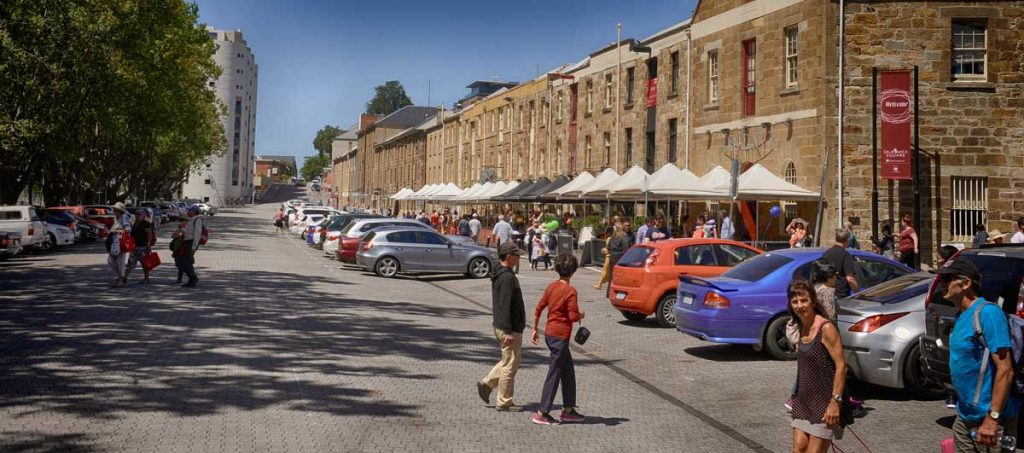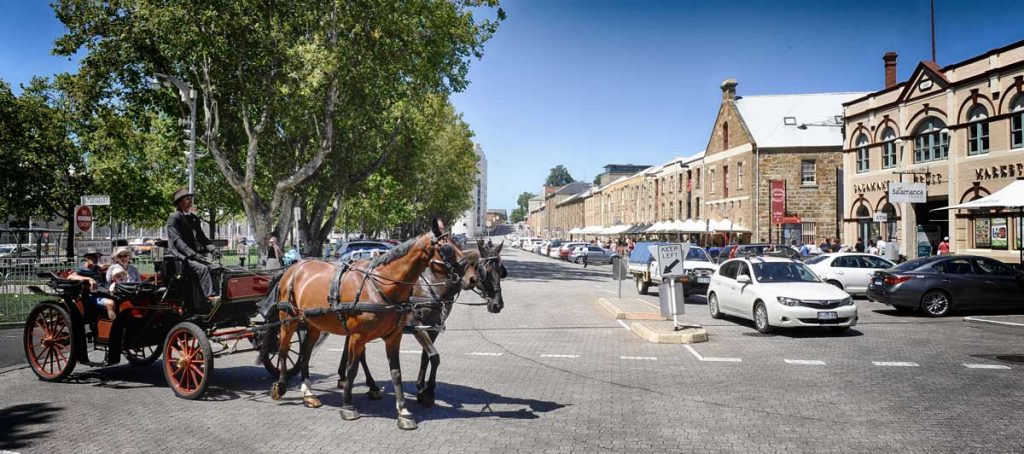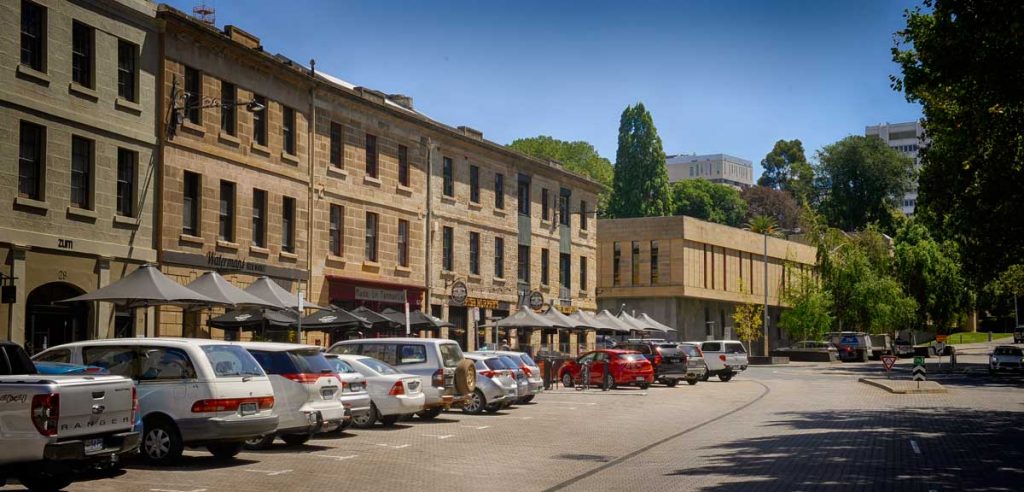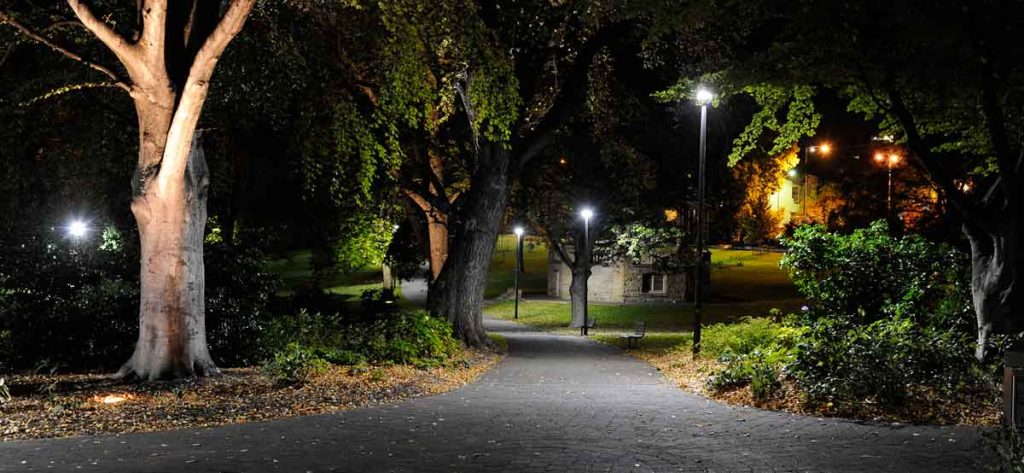Salamanca Place is located at the northern end of the suburb of Battery Point and is where those in the know come to shop, eat and browse the renowned Salamanca Markets.
The area runs parallel to the southern shore of Sullivans Cove, with the Castray Esplanade the only street separating it from the water. Originally called the Cottage Green, it was renamed in honour of the Duke of Wellington’s victory at the Battle of Salamanca in Spain during the Napoleonic Wars.
- Heritage Horse Drawn Carriages – Experience the romance of a bygone era by taking a leisurely carriage ride through this unique historic area. Click here for more information or phone 0408 763 392 – don’t forget to tell them Great Australian Secret sent you.
Much of the Salamanca area is built on land that was reclaimed in the 1830s with the help of convict labour. Back in the day, Salamanca Place was lined with warehouses belonging to Hobart’s wealthy merchants, who wanted to be able to store their imported and exportable goods near their Battery Point mansions but close to the docks for easy access to the ships that came into port. Many of these old warehouses still stand, among them the Ordnance Stores designed by John Lee Archer, the first colonial architect of what was then still called Van Diemen’s Land.
Archer was responsible for many Tassie landmarks but his masterpiece stands near the western end of Salamanca Place. It was Hobart’s Customs House and Archer designed it in 1835. By 1838 its construction was completed and in 1840 the Customs Department opened in this convict-built Georgian beauty. The Legislative Council of the Van Diemen’s Land colony soon decided that this was the perfect place for their meetings and in June 1841, they gathered for their first meeting in the Long Room. In 1904 the Customs Department moved out and the building became Tasmania’s Parliament House.
Much of the sandstone used in the construction not only of Parliament House but also of the warehouses and other buildings in Salamanca Place came from the Salamanca Quarry. This quarry operated until 1949 and supplied the building material for many of the roads in Hobart. In the 1990s, a local developer bought the site and had it converted into Salamanca Square with its stunning fountain and lawns where the kids can burn off some energy.
The Salamanca Market has been operating since 1972, when there were only 12 stalls. Today there are more than 300 stalls and with between 25,000 and 40,000 people visiting every Saturday, it’s Tasmania’s most popular attraction. Here you can buy arts and crafts, antiques, fashion and jewellery and an incredible array of fresh produce and gourmet delights.
Salamanca Place is one of Hobart’s premier restaurant strips and nightlife spots. It’s also the heart of the city’s arts scene, with the Salamanca Arts Centre housing the Peacock Theatre and galleries such as the Long Gallery and the Sidespace Gallery in converted Georgian warehouses. Throughout the area you’ll find smaller art galleries and artist’s studios too.
A block or so to the east of the Salamanca Market are Kelly Steps. This steep set of sandstone stairs were built in 1840 by James Kelly, the ‘father and founder’ of Tasmanian whaling, to provide a shortcut from Salamanca Place to the houses and cottages of Battery Point. Kelly was a fascinating man who, in 1815, had sailed all the way around Tasmania in the whaleboat Elizabeth. During the voyage his party were the first Europeans to visit Port Davey and Macquarie Harbour. In 1819 Kelly became the Derwent River’s pilot and harbourmaster and then became a respected businessman. However, soon after he built the Kelly Steps, an economic depression hit and he lost everything. He died in 1859.
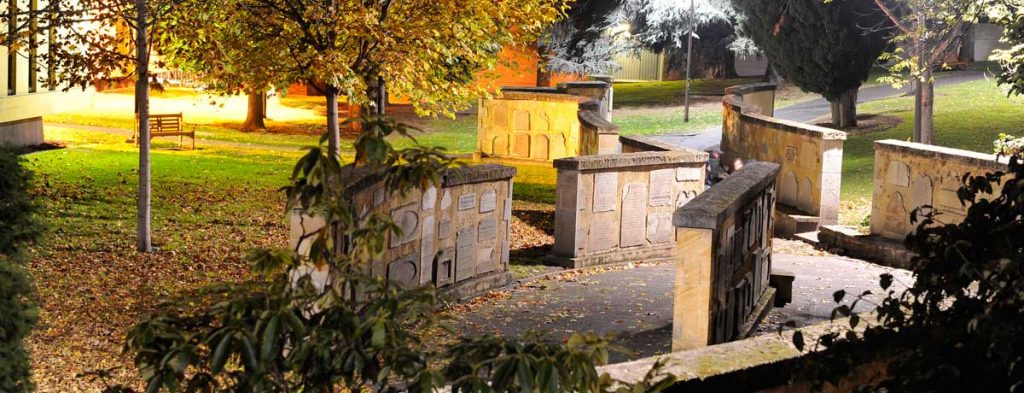
The headstones from St David’s Park cemetery, now removed and displayed at the rearof the Supreme Court
At its eastern end, Salamanca Place meets Princes Park. On the eastern edge of this lovely green space with its children’s playground is a small white cottage dating from 1818, when it was used as a signal station. Across the road you’ll find the award-winning new building of the University of Tasmania’s Institute for Marine and Antarctic Studies, the ultramodern design of which shows that Tasmania’s architectural heritage is still being created in Salamanca Place.

